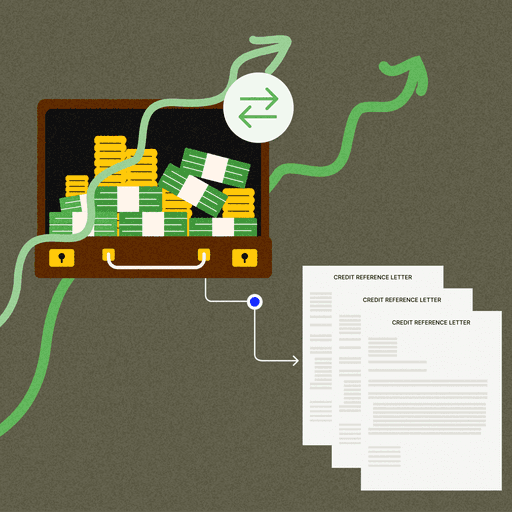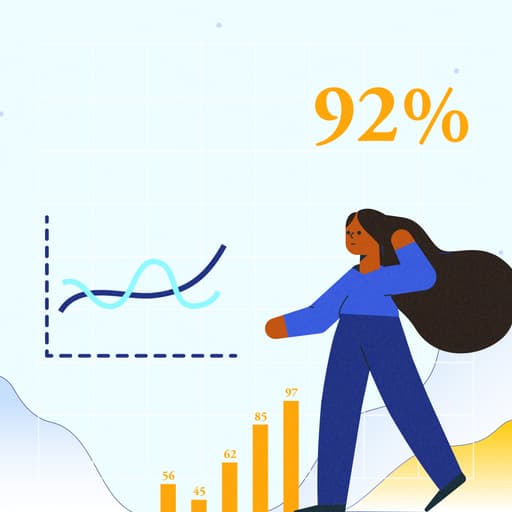
How Collaboration Tools Help Accounts Receivable Teams Streamline Workflows
- 7 min read
Traditional accounts receivable processes can make task management exceptionally difficult for AR teams. Thankfully, a new wave of collaboration tools is making it easier for AR staff to communicate with one another and manage complex work.
In this blog, you'll learn how collaborative AR helps finance teams streamline internal workflows.

There’s a good reason why Slack went from being an obscure gizmo made by a gaming company to the world’s most popular workplace communication tool used by 77% of the Fortune 100. Working together efficiently makes teams better.
And nothing enables that efficiency better than collaboration tools that help you boost quality of communication, share files, and organize work into a shared repository.
There are many areas in business that can benefit from enhanced collaboration. While Slack and other similar tools focus on enabling collaboration in general, there’s a new generation of software that prioritizes collaboration for specific business functions. Accounting—and specifically accounts receivable (AR)—is one notable area.
This article explores how collaboration tools help AR teams streamline their workflows, covering:
- Why workplace collaboration tools are so important
- Why the accounts receivable function is in need of better internal collaboration
- How collaborative AR automation software improves AR teams’ workflows
- How streamlining collaboration between AR team members improves the bottom line, and
- Tips for choosing a collaboration tool for your AR team
Why are workplace collaboration tools important?
As we all become more connected via the cloud, workplace collaboration tools are becoming the new standard of work worldwide.
Workplace collaboration means so much more than chatting with your colleagues a few desks over or–more likely–working remotely. File sharing is another key element of collaboration tools. This ensures all employees within a team has easy access to everything they need to do their jobs.
The goal of any workplace collaboration tool is for each team member to be united in their objectives, no matter where they’re located. In business functions like AR, important tasks like following up with customers about overdue invoices might be split between multiple team members. In this case, it’s even more important that everyone be kept in the loop on projects and able to collaborate.
Why is the accounts receivable function in need of better internal collaboration?
Many AR teams suffer from disjointed and confusing processes that make it hard to manage invoices, collections, and cash application.
For example, one team might be struggling with:
- Information living in multiple places, such as email threads and notes from phone calls. This can lead to problems like many collectors reaching out to the same customer about an overdue payment
- Lack of visibility into whether collections follow-up and cash application have been completed. When this is the case, team members may have to ask the same clarifying questions many times or accidentally duplicate work.
- Difficulty tracking down important documents, which might be in paper files, email attachments, or employees’ hard drives. This results in employees operating with incomplete information.
4 ways collaborative AR automation software improves AR teams’ internal workflows
The problems above don’t have to define your AR team’s reality. Here are four ways collaborative AR software helps companies avoid the confusion, crossed wires, and inefficiencies that typically accompany the invoice-to-cash cycle.
1. Communication among immediate teammates
Typically, there's no easy way for AR professionals to collaborate with and inform team members about a particular account. It usually involves emailing or calling colleagues–or even flagging them as they pass in the office.
With collaborative AR, however, you can communicate with teammates through a shared cloud-based portal. This allows all stakeholders to see the same information in real time.
Having important information and documentation available in one location means nothing gets lost in translation and everything has a clean audit trail.
This is particularly important now that more and more teams are working remotely all or part of the time. Cloud-based collaborative AR automation enables long-term remote work since teams can access everything they need to get things done, no matter where they’re located.
2. Task assignment
AR professionals often need to assign tasks to teammates. This could mean applying a payment to a related invoice, following up on overdue invoices, or looping in the right colleague to address a dispute.
This too isn't as easy as it would seem. You’ll have to spend time communicating the appropriate context to your colleague in an email or a meeting. And still, they might not have everything they need, sending them looking for supporting material elsewhere such as your enterprise resource planning (ERP) system.
Collaborative AR software allows you to assign tasks to people directly within a cloud portal. This way, the assignee can see both the task specifics and the supporting material all in one location.
The task assignee can also add any supporting information they might have, which can be made visible to the entire team. This helps avoid potential questions or confusion surrounding that account in the future.
3. Involvement of other departments
There are instances when another department, such as Sales, might communicate (or fail to communicate) information to customers that end up becoming questions for the AR team.
For example, let’s say that Sales told a customer about a discount that had not been approved. As a result, when paying the invoice, the customer asks the AR team why the discount wasn't applied. The AR team will need to collaborate with Sales to determine why the customer believes a discount should have been applied.
These miscommunications result in delayed payments, damaged customer relationships, and employee frustration. By preventing these miscommunications in the first place, you enhance both customer and employee experience.
Collaborative AR software allows you to easily collaborate with external teams on invoice disputes via a cloud-based portal.
4. Shared access to reporting
There are many stakeholders who care about the effectiveness of your collection efforts. Your AR team might receive requests from people across the business to update them on how quickly AR is collecting payments.
Traditional methods of responding to such requests involve manual data processing and excel wizardry. Collaborative AR software puts this information right at your fingertips. Better yet, it makes that information accessible to multiplestakeholders so they don’t have to ask you for it.
Through a cloud-based portal, executives and anyone who needs to access important metrics like your days sales outstanding (DSO) can do so at a glance.
How streamlining collaboration between AR team members improves the bottom line
By improving the way your AR department manages shared tasks and internal processes, you can unlock real bottom-line savings.
Here’s how:
1. Less time spent performing manual functions
Collaborative AR software like Versapay can provide powerful automation alongside collaboration functions. This helps streamline tasks and projects that are typically time-consuming for AR teams, such as invoicing, reconciliation, dispute management. This ultimately saves staff time for higher-value work.
2. More revenue captured
Collaborative AR tools often include online portals where customers can make payments in a range of supported methods. This increased convenience and self-service for customers drives faster payments.
3. Increased staff productivity
AR teams using collaborative AR tools get more work done than they could when using manual processes. As a result, team members increase their productivity and focus on more impactful work.
4. Boosted morale and culture
AR teams that have to perform less manual work are more likely to enjoy their jobs. Higher employee morale results in greater employee retention rates, saving finance departments the cost of finding replacements (which reportedly ranges from six months to to years of an employee’s salary).
Choosing the right collaboration tool for your AR team
Choosing a collaboration tool for your AR team requires knowing how your team works now, the challenges they currently experience, and the changes that would help them work better.
Ask yourself the following questions to help determine your AR team’s specific needs:
- How does your team currently communicate and collaborate with one another?
- How many teams need visibility into AR?
- How are supporting teams looped into projects/conversations related to AR?
- What types of projects need cross-departmental or team collaboration?
- How many people will be collaborating at any given time?
- What challenges are your team members identifying?
- What would the team like to change about their existing workflows?
You'll also want to ensure that the AR collaboration tool you choose helps your team communicate and share information easily and securely. Look out for the following features:
- A cloud-based portal in which all communication and collaboration between AR and members from other departments can take place
- An intuitive interface that makes the tool easy to use and facilitates the organization of data
- Integrations with other tools the AR team already uses and compatibility with the company's larger digital environment
Choosing the right tool can transform the way your AR team functions, making their work more streamlined and gratifying.
—
Versapay improves AR teams' workflows by facilitating greater team and customer collaboration. Want to see for yourself? Request a demo today.
About the author

Katie Gustafson
Katherine Gustafson is a full-time freelance writer specializing in creating content related to tech, finance, business, environment, and other topics for companies and nonprofits such as Visa, PayPal, Intuit, World Wildlife Fund, and Khan Academy. Her work has appeared in Slate, HuffPo, TechCrunch, and other outlets, and she is the author of a book about innovation in sustainable food. She is also founder of White Paper Works, a firm dedicated to crafting high-quality, long-from content. Find her online and on LinkedIn.


